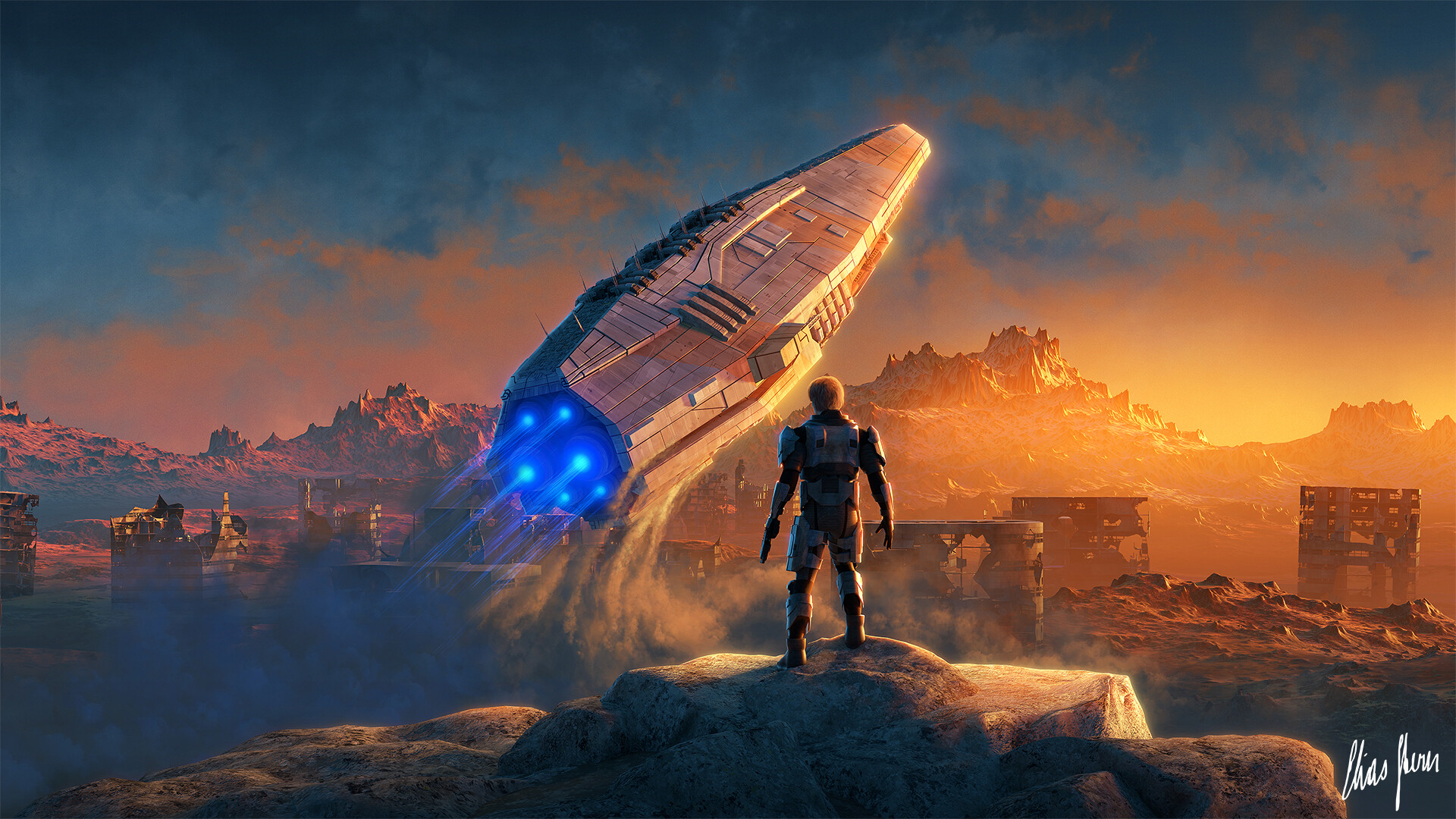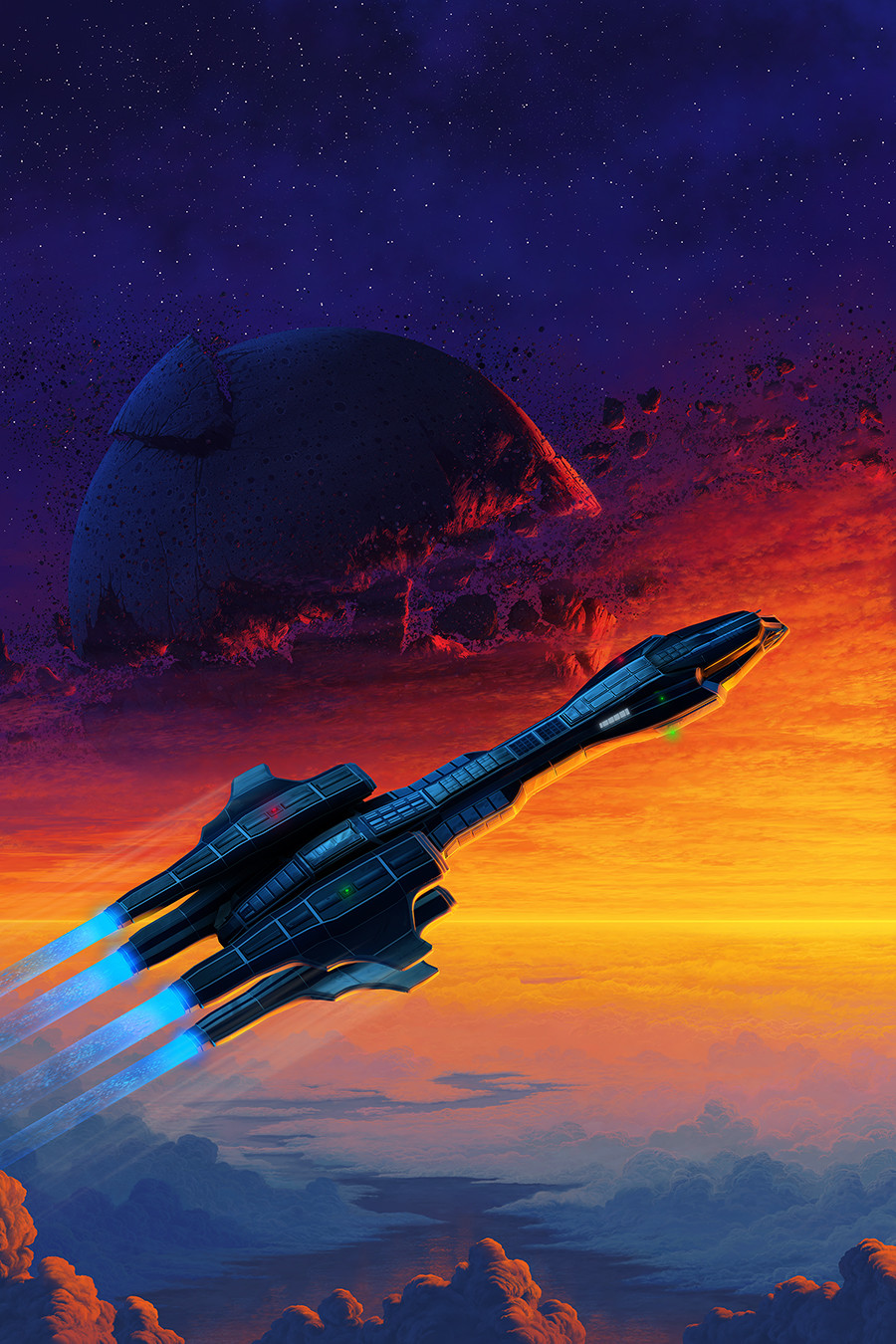Mr. Janus
Character
Model A: "Fulcrum"


Model B: "Feather"


OUT OF CHARACTER INFORMATION
Treatech's keystone engine design culminating in two models provides engineers, designers, and pilots with a powerful alternative to standard ion engines. Integrating Treatech technology and software ensures there is no similar competitor on the market, isolating purchasing options with a tantalizing design. Some argue this is manipulative design practice, as purchaces have been requested and denied for Fulcrums and Feathers without the built in Ion Neutralizer. Treatech's official stance is that the results of removing the integrated technology are either non-functional or exceptionally dangerous. Internal memos reveal that this is not true, save for the increased danger, but rather that they have no desire to produce such a design and risk loosening their grip on this corner of the market.
More resilient and with a higher top speed than most competitors, Treatech's IFD-2 one true weakness is a far below average acceleration speed, making it less desirable as a main engine for small craft like fighters. On the other hand, it provides them with high-speed ion-resistant engines, so some might be willing to suffer the consequences. Alternatively, some pilots may opt to install IFD-2s alongside other models of engines to mitigate the loss of acceleration by getting up to speed with standard engines and burning to a an above average top speed with the IFD-2.


Model B: "Feather"


OUT OF CHARACTER INFORMATION
- Intent: To create an open-market engine system for starships of all sizes
- Image Source: ArtStation
- Canon Link: Ion Drive
- Permissions: N/A
- Primary Source: N/A
- Manufacturer: Treatech
- Affiliation: Treatech Holdings
- Market Status: Open-Market
- Model:
- IFD-2/A "Fulcrum" (Circular in shape and intended for Large Cruisers, Star Destroyers, Dreadnaughts, and Space Stations)
- IFD-2/B "Feather" (Rectangular in shape and intended for Small Cruisers, Frigates, Corvettes, and Small Craft)
- Modularity: Low
- Scalable sizes within A/B models
- Protruding or hull-integrated aesthetic options
- Production: Mass-Produced
- Material: Durasteel structuring, Laminanium, Standard Engine components
- Ion Neutralizer: The IFD-2's Ion Neutralizer and custom safety software is capable of quickly killing runaway ion fusion reactions, preventing waste heat generation and reducing the chance of damage to systems while a ship is idling
- Thrust Vectoring Gimbals
- Cold Fusion Reactor
- Ion-Resistant
- The engine is resistant to ionizing energy, as the Ion Neutralizer it is equipped with works to kill all runaway ion energy present in the engine's systems, not just the ones in the reactor and fusion core
- Healbot
- The laminanium inside the engine is able to partially mitigate sustained damage by melting and re-setting, patching damages and allowing the IFD-2 to take more punishment than normal
- Overhauled Injectors
- Cold fusion allows introduction of more raw fuel into the reaction compared to standard engines, allowing the maximum speed of the IFD-2 to outpace similarly classed engines
- Hear Me Roar
- Massive ion energy output from these engines makes ships equipped with them easy to detect with even low-grade sensors. This makes the IFD-2 a poor choice for stealth ships save ones with cutting edge cloaking technology
- Heat-Sink
- Laminanium self-healing will only occur when the lining metal is heated to the point of melting and then allowed to cool to reset. Typically functioning very well against laser and beam weapons with the engine's above-average heat management systems, sufficiently accelerated kinetic weapons and shrapnel can pierce the laminanium lining without heating it enough to melt, inflicting damage and prevent the engine from patching itself.
- Spool Time
- Very poor acceleration stems from built in safety features that kill the ion fusion reaction every time the ship comes to a full stop in order to negate waste heat storage/production as much as possible. Restarting the engines involves a short wind up time while the engines re-accelerate the ion fusion reaction
Treatech's keystone engine design culminating in two models provides engineers, designers, and pilots with a powerful alternative to standard ion engines. Integrating Treatech technology and software ensures there is no similar competitor on the market, isolating purchasing options with a tantalizing design. Some argue this is manipulative design practice, as purchaces have been requested and denied for Fulcrums and Feathers without the built in Ion Neutralizer. Treatech's official stance is that the results of removing the integrated technology are either non-functional or exceptionally dangerous. Internal memos reveal that this is not true, save for the increased danger, but rather that they have no desire to produce such a design and risk loosening their grip on this corner of the market.
More resilient and with a higher top speed than most competitors, Treatech's IFD-2 one true weakness is a far below average acceleration speed, making it less desirable as a main engine for small craft like fighters. On the other hand, it provides them with high-speed ion-resistant engines, so some might be willing to suffer the consequences. Alternatively, some pilots may opt to install IFD-2s alongside other models of engines to mitigate the loss of acceleration by getting up to speed with standard engines and burning to a an above average top speed with the IFD-2.






